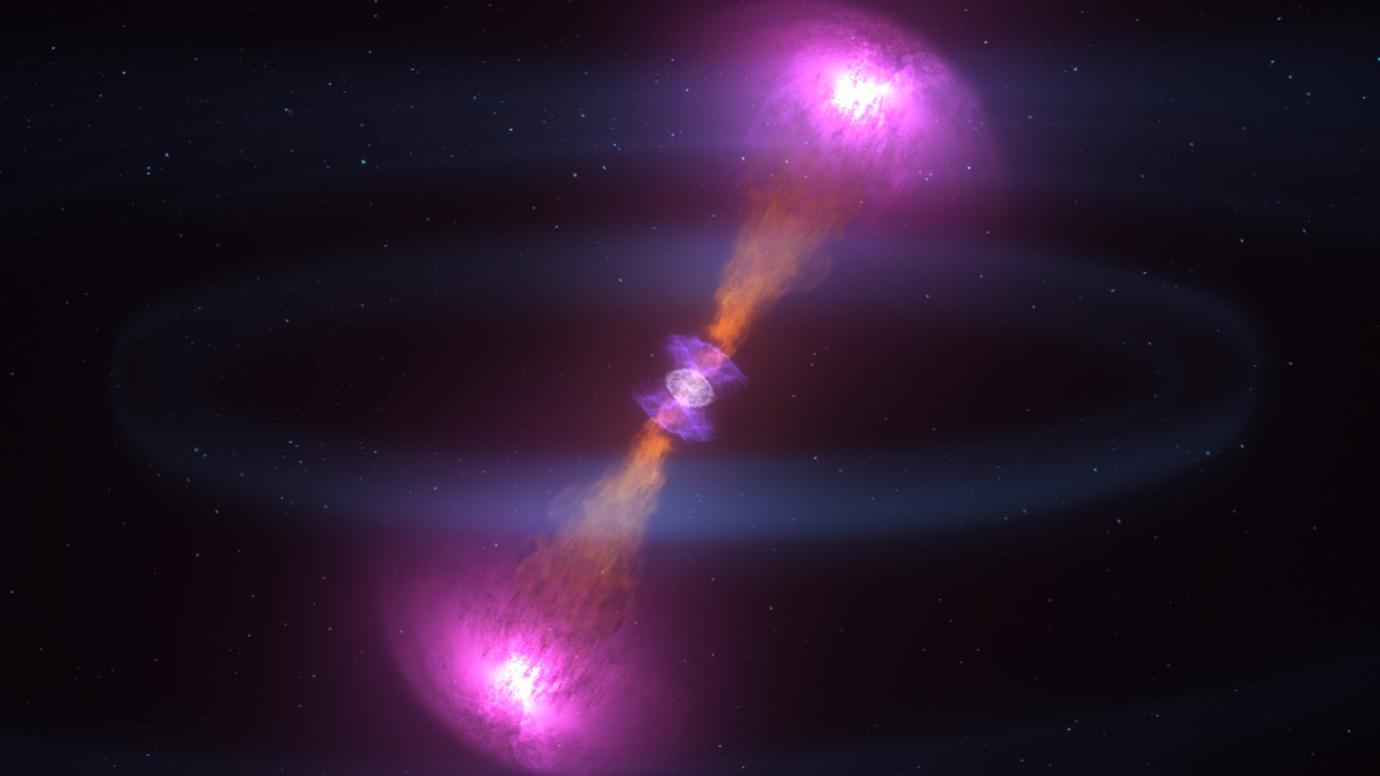In August of 2017, astronomers made another major breakthrough when the Laser Interferometer Gravitational-Wave Observatory (LIGO) detected gravitational waves that were believed to be caused by the merger of two neutron stars. Since that time, scientists at multiple facilities around the world have conducted follow-up observations to determine the aftermath this merger, as even to test various cosmological theories.
For instance, in the past, some scientists have suggested that the inconsistencies between Einstein’s Theory of General Relativity and the nature of the Universe over large-scales could be explained by the presence of extra dimensions. However, according to a new study by a team of American astrophysicists, last year’s kilonova event effectively rules out this hypothesis.
Their study was recently published in the Journal of Cosmology and Astroparticle Physics, titled “Limits on the number of spacetime dimensions from GW170817“. The study was led by Kris Pardo, a graduate student with the Department of Astrophysical Sciences at Princeton University, and included members from the University of Chicago, Stanford University, and the Flatiron Institute’s Center for Computational Astrophysics.

Unlike previous events that produced gravitational waves, the kilonova event – known as GW170817 – involved the merger of two neutron stars (as opposed to black holes) and the aftermath was visible to astronomers using conventional telescopes. What’s more, it was the first astronomical event to be detected in both gravitational and electromagnetic waves – including visible light, gamma rays, X-rays, and radio waves.
As Prof. Daniel Holz – a Professor of astronomy/astrophysics and physics at the University of Chicago, and a co-author on the study – explained:
“This is the very first time we’ve been able to detect sources simultaneously in both gravitational and light waves. This provides an entirely new and exciting probe, and we’ve been learning all sorts of interesting things about the universe.”
As noted, scientists have long sought explanations for the discrepancy between our modern understanding of gravity (as explained by General Relativity) and our observations of the Universe. Essentially, galaxies and galaxy clusters exert a greater gravitational influence than can be explained by the amount of visible matter they have (i.e. stars, dust and gas).

So far, scientists have suggested the existence of dark matter to explain the apparent “missing mass”, and dark energy to explain why the Universe is in a constant (and accelerating) state of expansion. But another theory is that over long distances, gravity “leaks” into additional dimensions, causing it to appear weaker over large scales. This would explain the apparent disparity between astronomical observations and General Relativity.
The kilonova event – and the gravitational waves and light it produced – offered the research team a way to test this theory. Basically, if gravity were leaked into other dimensions after the merger, then the signal measured by LIGO and other gravitational wave detectors would have been weaker than expected. However, it was not.
From this, the team determined that even over scales involving hundreds of millions of light-years, the Universe consists of three the dimensions of space and one of time that we are familiar with. And according to the team, this is just the first of many tests that astronomers will be capable of making thanks to the recent explosion in gravitational wave research.
“There are so many theories that until now, we didn’t have concrete ways to test. This changes how a lot of people can do their astronomy,” said Fishbach. With future gravitational wave detections, scientists may find ways to test other cosmological mysteries. “We look forward to seeing what gravitational-wave surprises the universe might have in store for us,” Holz added.
Further Reading: UChicago News, Journal of Cosmology and Astroparticle Physics

